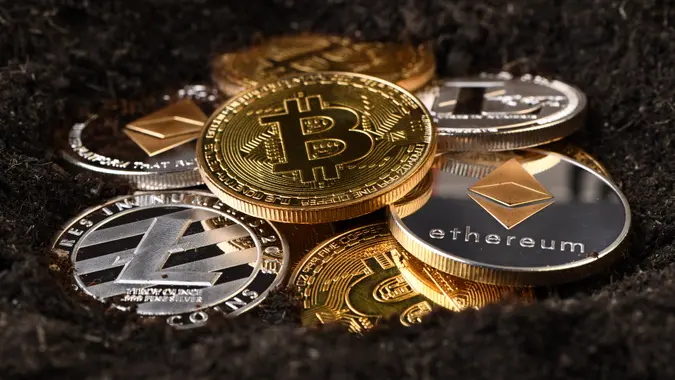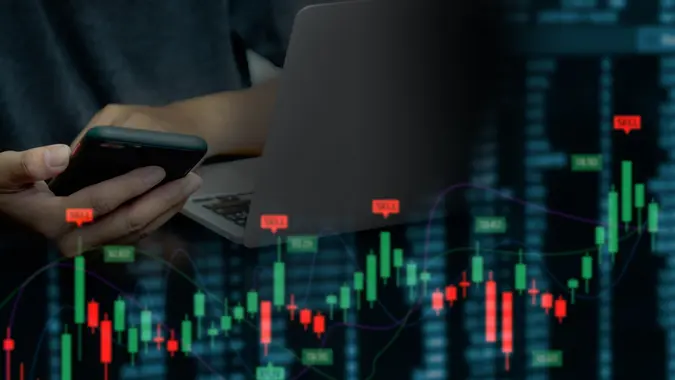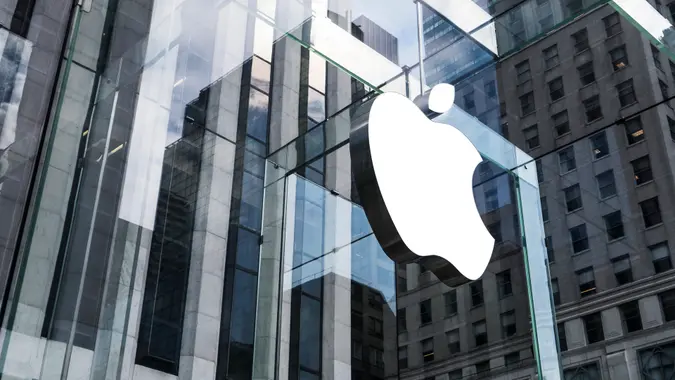What Are Callable Bonds? How They Work and How To Invest

Commitment to Our Readers
GOBankingRates' editorial team is committed to bringing you unbiased reviews and information. We use data-driven methodologies to evaluate financial products and services - our reviews and ratings are not influenced by advertisers. You can read more about our editorial guidelines and our products and services review methodology.

20 Years
Helping You Live Richer

Reviewed
by Experts

Trusted by
Millions of Readers
Callable bonds are a type of bond that the issuer can “call” or redeem before the maturity date. The specifics vary from bond to bond, but callable bonds always have one thing in common — the issuer can pay off the bond early. As an investor, there are potential benefits and drawbacks to consider before investing in callable bonds. Here’s what you need to know about callable bonds.
What Are Callable Bonds?
Bonds are a good investment in uncertain times because they offer a fixed interest rate for a set period. Unlike stocks, their value doesn’t fluctuate as much with market ups and downs. When the bond reaches its maturity date, you get back the amount you originally invested.
But some bonds are callable, meaning the issuer — whether it’s a company, city or other organization — can choose to pay them off early before the maturity date.
How Callable Bonds Work
If you’re considering buying callable bonds, it’s important to understand how they work.
Call Price
Bonds may come with a call price, which is the amount the issuer can pay to buy the bond back from you before it matures. The call price is indicated in the bond’s prospectus, so it’s important to check before you invest. When the bond reaches that price, you will have to sell the bond back to the issuer at that price.
The call price is higher than the face value of the bond.
Call Date
Some callable bonds can be called at any time, while others can only be called after a certain amount of time. For those with a waiting period, the call date — the earliest date the issuer can buy back the bond — is specified in the bond’s terms.
Why Bonds Are Called
When a bond is called, the investor will typically receive as much, if not more money than they would have if they had held the bond to maturity. So the issuer is actually paying a premium to call the bond. So why would an issuer call a bond instead of waiting until the bond matures?
There are a couple of reasons a bond issuer might call a bond before its maturity date.
- When interest rates decline, a bond issuer may be able to issue new bonds that pay a lower rate of interest. Calling outstanding bonds is less expensive for them in the long run.
- The issuer may have financed the project or expenditure in a different way. They would call the bonds because they are more expensive than the new financing method.
Types of Callable Bonds
There are three main types of callable bonds.
Fully Callable Bonds
Fully callable bonds can be called at any time after the call date. The full amount of the bond can be called. Fully callable bonds are the most common type of callable bonds issued by corporations.
Partially Callable Bonds
Partially callable bonds allow for a specific portion of the bond to be called — not the entire bond. These bonds are used in financing strategies where a project may require some of the funds for a shorter period of time than the full term of the bond.
Make-Whole Callable Bonds
Make-whole callable bonds require that the issuer, if they call the bonds, make the bondholders whole. In other words, they have to pay the bondholders the amount of money they would have earned if they had held the bond to maturity. This accounts for the present value of future payments.
These bonds are less risky for investors than other types of callable bonds, because the investor gets the same return, whether the bond is called, or they hold it to maturity.
Types of Callable Bonds at a Glance
| Type of Callable Bond | Call Timing | Usage |
|---|---|---|
| Fully Callable Bonds | Can be called at any time after the call date if applicable | Common among corporate bonds |
| Partially Callable Bonds | Only a portion of the bond can be called, not the full amount | Used in financing strategies where only part of the funds are needed for a shorter period |
| Make-Whole Callable Bonds | Issuer must compensate bondholders for the lost future interest payments | Less risky for investors as they receive the full expected return |
Benefits of Callable Bonds
Callable bonds have benefits for both investors and issuers.
- For investors, callable bonds typically have higher interest rates than non-callable bonds. There may also be potential tax advantages for some investors.
- For bond issuers, callable bonds provide the opportunity to refinance their debt if market conditions change. This is a distinct advantage for entities that issue long-term bonds that may not mature for 30 years. It gives the issuer the opportunity to borrow less expensively if rates change during that time.
Risks of Callable Bonds
Callable bonds also have risks.
- For investors, they may have to reinvest at a lower interest rate if a bond is called prior to its maturity date.
- Since the call price for callable bonds is capped at the time the bond is issued, there is limited potential for the bond to appreciate in value.
Example of a Callable Bond
Here’s an example of how a callable bond might work:
- ABC Company issues callable bonds worth $1,000 with a 5% coupon rate (interest rate).
- The bond will mature in 2055 (30 years) but it can be called after 5 years at 102% of its value — $1,020.
- An investor buys the bond for $1,000 and earns $50 per year in interest.
- If the bond stays until maturity, the investor would get $2,500 total — $1,500 in interest + $1,000 in original investment.
- After 5 years, interest rates drop to 3%, so ABC company calls the bond and issues new ones at a lower rate.
- The investor gets $1,020 back (instead of $1,000) and has already received $250 in interest.
- In total, the investor gets $1,270 — less than the $2,500 they could have earned but now they have their money back to invest.
Understanding Yield to Call
To see whether you’re better off holding the bond until maturity or if it’s called early, you can calculate the yield to call.
- The bond’s original yield (coupon rate) is 5%.
- If the bond is called, the YTC is 5.03% — just slightly better.
Since TYC calculations are tricky, you can use an online yield calculator to do the math for you.
Conclusion: Are Callable Bonds Right for You?
Callable bonds, like any investment, have risks and benefits. If you are looking for an income-producing investment with little risk, and have a plan if things change, callable bonds may be a good investment to add to your portfolio. Just be sure you understand the circumstances under which a bond could be called and a strategy for what to do if that happens.
FAQ
Callable bonds are an investment option for investors comfortable with a call date before maturity. Here are answers to common questions about callable bonds.- What happens when a callable bond is called?
- When a callable bond is called, the issuer buys the bond back from the investor at a price that was stated when the bond was purchased.
- How do callable bonds compare to regular bonds?
- Callable bonds can be bought back by the issuer prior to the maturity date. Regular bonds must be held by the investor until the maturity date.
- Can callable bonds be sold before maturity?
- Yes. If the issuer chooses to buy them back they can, according to the terms of the bond.
- What is yield to call, and why is it important?
- Yield to call tells an investor how much they will earn on a callable bond if it is called early. Knowing the yield to call helps an investor make an informed decision as to whether a callable bond is a good investment for them.
- Are callable bonds suitable for conservative investors?
- They can be. The investor just needs to understand that it's possible they may not be able to hold the bond to maturity. If the bond is called, the investor should have a plan for what to do with that money.
Taylor Milam-Samuel contributed to the reporting for this article.
Our in-house research team and on-site financial experts work together to create content that’s accurate, impartial, and up to date. We fact-check every single statistic, quote and fact using trusted primary resources to make sure the information we provide is correct. You can learn more about GOBankingRates’ processes and standards in our editorial policy.
- Investor.gov. "Callable or Redeemable Bonds."
- FINRA. 2024. "Callable Bonds: Be Aware That Your Issuer May Come Calling."
 Written by
Written by  Edited by
Edited by 

























